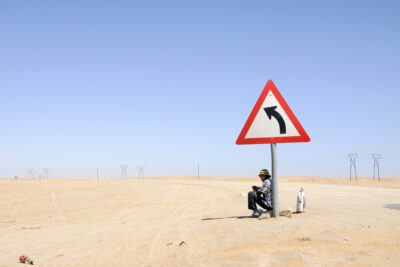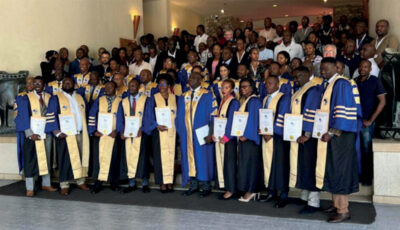Main content
Below is a summary of how the kind support of the Otto Kranendonk Fund enabled us – a team including nurses, wound dressers, laboratory technicians and doctors including the authors – to start our project on researching and improving wound care in Sierra Leone.
Having suffered from a civil war in the nineties and a more than two-year-long Ebola virus disease outbreak until 2016, the country’s health system is fragile. Wounds are a common problem and often arise due to infection or secondary to trauma, but there is a lack of data on prevalence, aetiology and antimicrobial resistance patterns. Prevention, diagnosis and (surgical) treatment of wounds is often difficult or unavailable. Until 2023, there was no clinical microbiology lab for wound swabs in Sierra Leone. Empirically, many of the wound patients present at a late stage at a health clinic, often delayed by an initial visit to a traditional healer and/or use of topical treatment or antibiotics from a local drug store.
In 2019, our local research team started our first project to collect prospective data on new wound patients in Masanga Hospital. This former leprosy clinic has evolved into a larger district hospital and has become a national referral centre for wound patients. With the help of a full-time research nurse, several wound dressers, lab technicians, clinical officers, medical doctors and, most importantly, the patients who all gave their informed consent – a database of roughly 300 patients was built in 1.5 years. Forms for history taking, clinical examination, diagnostics, and follow-up were designed by our team, cleared by the Masanga Medical Research Unit’s Scientific Review Board (MMRU-SRC) and subsequently approved by the Ministry of Health and Sanitation (MOHS) and Ethics Board of Sierra Leone. Due to several challenges, such as loss of equipment and data and an infectious disease outbreak at the hospital, roughly only half of our wound care population could be included in our subsequent studies. The first two studies have been published, and analysis for the third is currently being conducted.
- Study 1 [1] and study 2 [2]. Wounds swabs were taken from all wound patients and sent for culturing in the Munster University Hospital with the help of Prof. Schaumburg. [3] We found a common colonisation with Pseudomonas spp., Klebsiella spp., Proteus mirabilis and Staphylococcus aureus related complex. These pathogens commonly co-occur and are often resistant against common antibiotics. We therefore concluded that for patients with chronic wounds who are not systemically ill, emphasis should lie on topical wound care.
- Study 3. We further aim to describe the demography, clinical examination and outcomes of treatment of our wound patients at Masanga Hospital. The relatively young and predominantly male population is often treated with honey (for which local beekeepers were trained) [4] or povidone dressings and surgical debridement, skin grafting or amputation. We took clinical data including photos during their treatment at the hospital and followed up on most of the patients after six months.
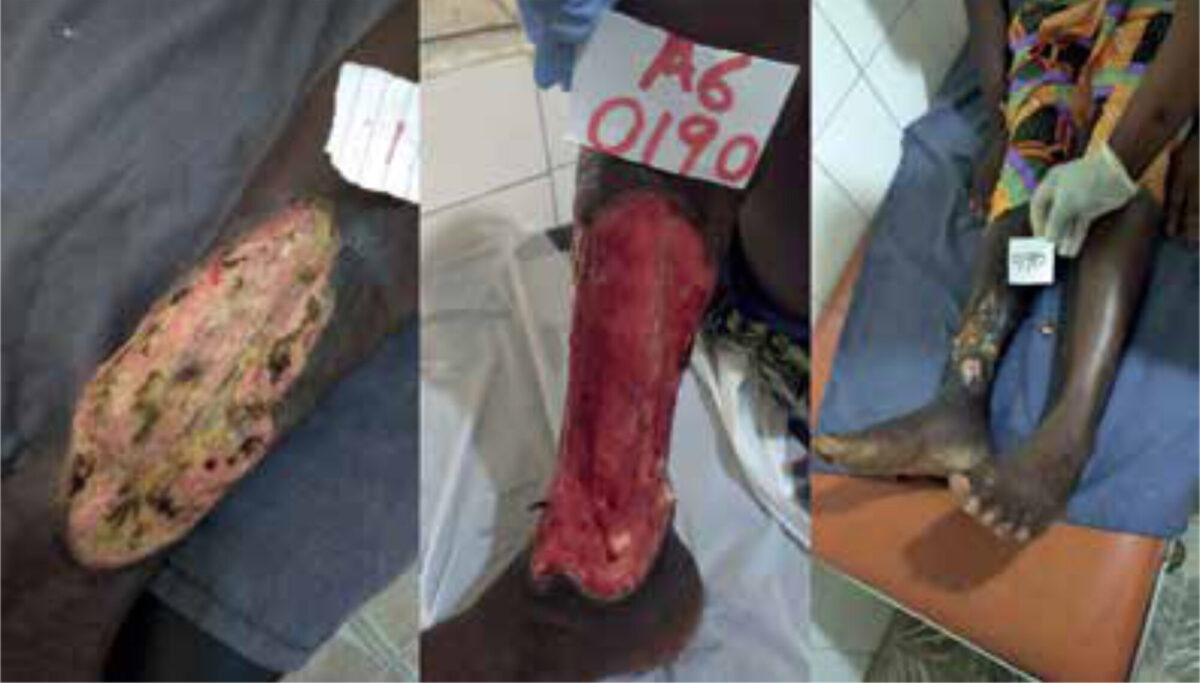
A second part of the same project funded by the OKF grant was a knowledge, attitude, and practice study. With the help of focus groups and interviews among health care providers, traditional healers, patients in need of wound care and the general population, we designed a questionnaire on wounds and wound care. Roughly 400 people, including several traditional healers, among the 11 chiefdoms in Tonkolili district, were included. We asked for their knowledge on the origin and (availability) of treatment of wounds and their attitude and subsequent practice regarding health care seeking behaviour. The data show interesting findings on the common practices (e.g. use of salt and papaya and traditional healthcare) and the willingness of traditional healers to work together with health clinics. We aim to analyse and publish our findings soon.
Over the past years, several improvements, including the rehabilitation of the wound clinic, were undertaken to improve wound care at Masanga Hospital. Some of these improvements were made possible (in)directly by conducting the OKF project, e.g. by having a full-time research nurse available for patients and training our staff. More attention on wound care at Masanga Hospital has further increased the influx of patients in need of wound care. This was also enabled by increased referrals from other hospital, a group working on 3D printing of limb prosthesis in Masanga [5], and the founding of the Masanga Medical Research Unit in 2018 by prof. Grobusch from the Amsterdam University Medical Center and partners, including the Masanga Hospital Rehabilitation Project, CapaCare, University of Amsterdam, University of Munster, Statistics Sierra Leone and the Ministry of Health and Sanitation of Sierra Leone. [6] Many research questions remain to be answered, and there is still a high unmet need for high(er) quality wound care in Sierra Leone. We are looking forward to the work of several other groups of researchers currently conducting further wound research in Sierra Leone. These include microbiological studies in the new lab at Masanga Hospital and a clinical trial on the addition of Clindamycin for wound treatment. Future plans are also being drafted to implement several improvements to the Masanga Hospital wound clinic together with an observational study, and to compare data on treatment and outcomes to ours from 2019-2020 (e.g. case controlled).
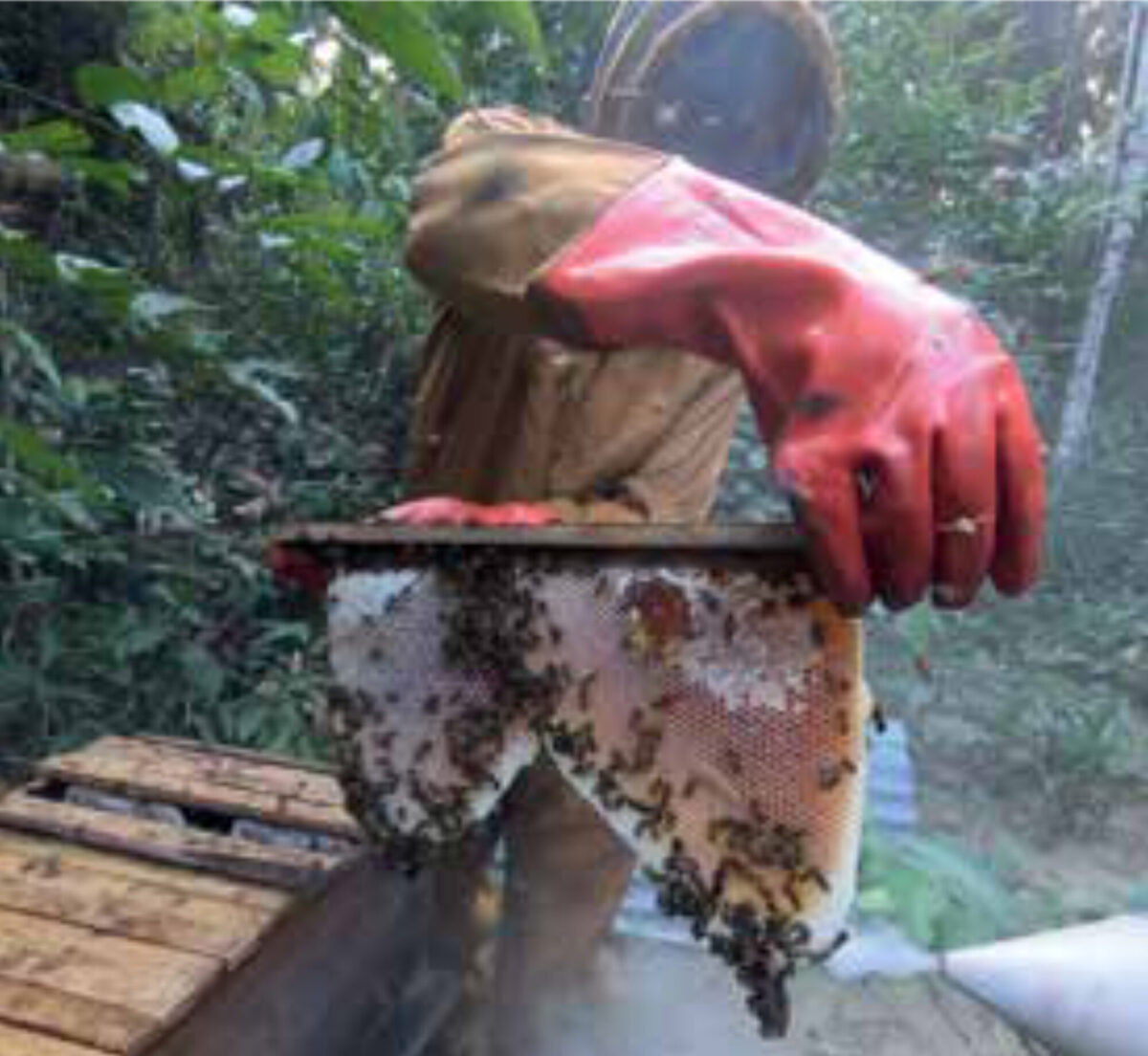
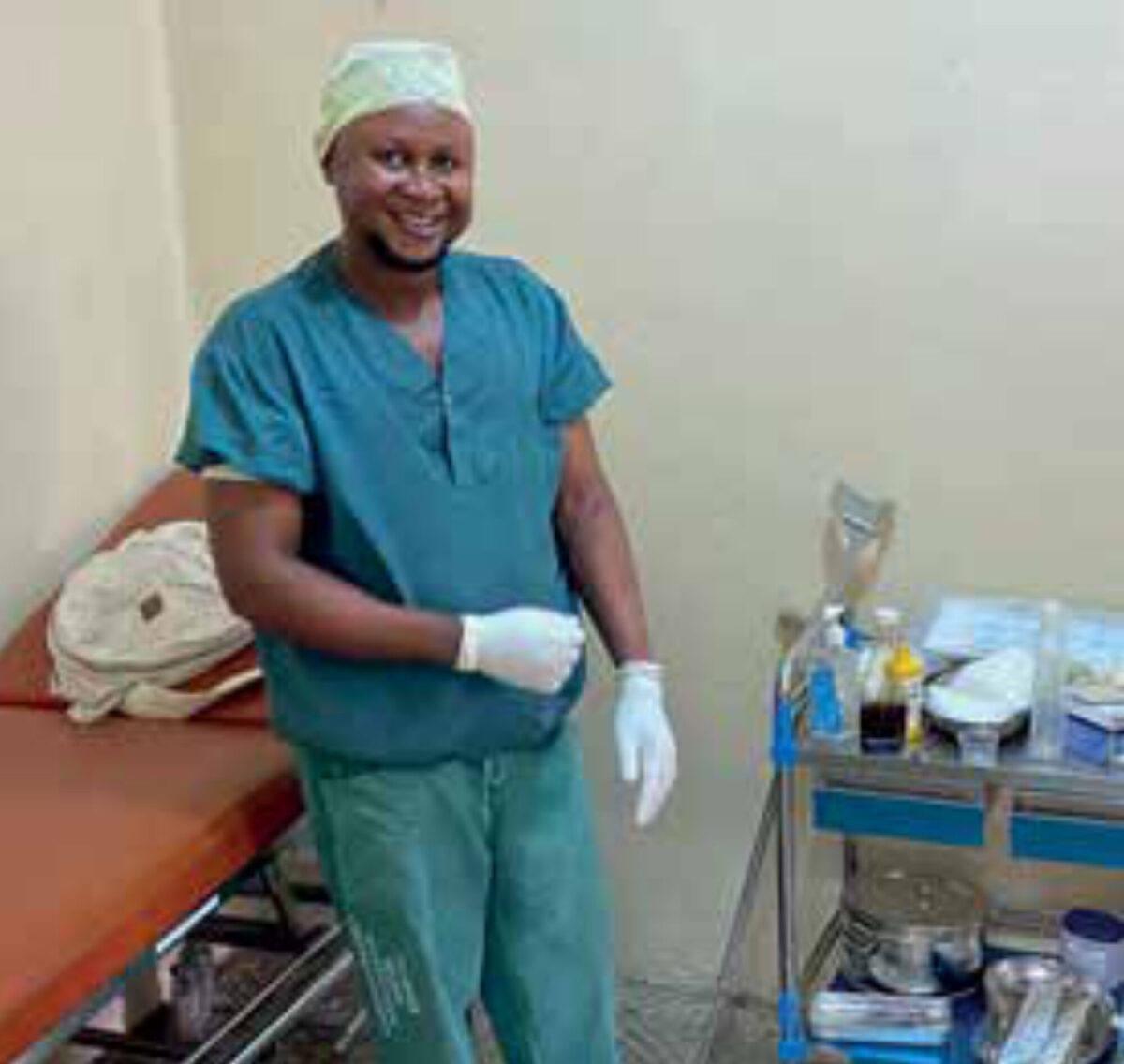
References
- Chronic wounds in Sierra Leone: pathogen spectrum and antimicrobial susceptibility, Frieder Schaumburg et al, Infection 2022. https://doi.org/10.1007/s15010-022-01762-6
- Network analysis of polymicrobial chronic wound infections in Masanga, Sierra Leone. Sarah Sandmann et al, BMC Infectious Diseases (2023) https://doi.org/10.1186/s12879-023-08204-0
- https://www.medizin.uni-muenster.de/en/institute-of-medical-microbiology/research/bacteriology-in-the-tropics.html
- https://www.nasf.nl/project/bijenhoning-en-wondverzorging-zo-verging-het-de-winnaar-van-de-albert-schweitzer-prijs-2019/
- https://www.3dsierraleone.com
- https://www.masangahospital.org/about-masanga/research/


















































